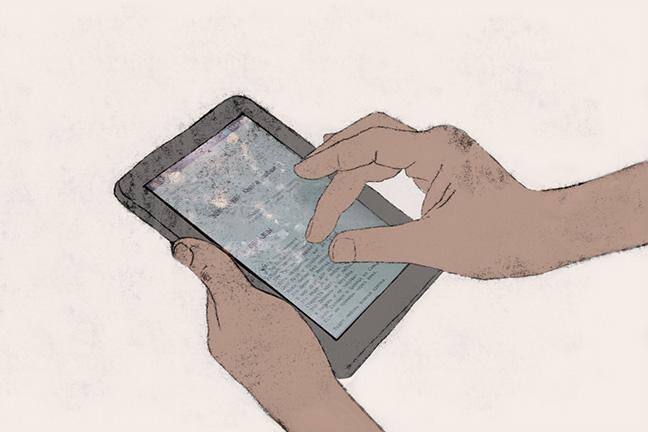HYPER READING & SOCIAL READING
3.7
What are the benefits and risks of hyper reading?
At the beginning of the chapter in How We Think: Digital Media and Contemporary Technogenesis (2012) that focuses on hyper reading, N. Katherine Hayles cites several U. S. studies that observe the effects of on-screen reading on the population. Hayles summarizes the results of several studies succinctly: ‘people read less print, and they read print less well’ (65).
However, another study by the National Endowment for the Arts, Reading on the Rise (2009) found that people, including digital natives, are reading more novels again. For Hayles, the pivotal questions are these: ‘how to convert the increased digital reading into increased reading ability and how to make effective bridges between digital reading and the literacy traditionally associated with print’ (56)?
Other observers of the digital age are much less optimistic than Hayles. In his diatribe from the mid-1990s, The Gutenberg Elegies: The Fate of Reading in an Electronic Age (1994), Sven Birkerts warns against the disappearance of what he calls ‘deep reading,’ which we can understand as the experiential equivalent of close reading. Deep reading names a certain reading experience, namely ‘the slow and meditative possession of a book. We don’t just read the words, we dream our lives in their vicinity’ (146). ‘A book’, he adds ‘is solitude, privacy; it is a way of holding the self apart from the crush of the outer world’ (164).
What is ‘deep’ in deep reading, then, is the cognitive and emotional effects that solitary, close, concentrated reading has on readers. Such effects, Birkerts contends, become possible not only when we immerse ourselves in the fictional worlds of literary texts but also when we critically engage with the issues raised by them.

Hand zooming in on a tablet screen (© New Media Center, University of Basel)
For Birkerts, this special kind of experience is under imminent threat by new reading practices that are becoming dominant: superficial reading practices such as hyper reading that invite readers to hasten from hyperlink to hyperlink and ‘experience constant interruption’ (162); reading practices that invite us to scan, filter, and skim texts rather than taking the time to gain an in-depth understanding of what is read.
‘For in fact’, Birkerts writes, ‘our entire collective subjective history − the soul of our societal body − is encoded in print. […]. If a person turns from print […] then what happens to that person’s sense of culture and continuity?’ (20).
His ‘core fear’, he adds near the end of the book, ‘is that we are, as a culture, as a species, becoming shallower; that we have turned from depth − from the Judeo-Christian promise of unfathomable mystery − and are adapting ourselves to the ersatz security of a vast lateral connectedness. That we are giving up on wisdom, the struggle for which has for millennia been central to the very idea of culture, and that we are pledging instead to a faith in the web’ (228).
In a more recent book, The Shallows: What the Internet is Doing to Our Brains (2010), Nicholas Carr cites numerous scientific studies that show how continual on-screen reading changes the neuronal structures of readers’ brains. For Carr, these changes are unequivocally deleterious as they render not only the heightened reading experience Birkerts speaks of (‘deep reading’) but also any profound cognitive engagement with texts (‘deep thinking’) impossible. In Carr’s own words, ‘when we go online, we enter an environment that promotes cursory reading, hurried and distracted thinking, and superficial learning. It’s possible to think deeply while surfing the Net […] but that’s not the type of thinking the technology encourages and rewards. One thing is very clear: if, knowing what we know today about the brain’s plasticity, you were to set out to invent a medium that would rewire our mental circuits as quickly and thoroughly as possible, you would probably end up designing something that looks and works a lot like the Internet’ (115-16).
In the final words of his essay ‘Is Google Making Us Stupid? What the Internet is Doing to Our Brains,’ Carr puts it thus: ‘as we come to rely on computers to mediate our understanding of the world, it is our own intelligence that flattens into artificial intelligence’.
References
Birkerts, Sven. The Gutenberg Elegies: The Fate of Reading in an Electronic Age. New York: Fawcett Columbine, 1994.
Carr, Nicholas. The Shallows: What the Internet is Doing to Our Brains. New York: W.W. Norton, 2010.
Hayles, N. Katherine. How We Think: Digital Media and Contemporary Technogenesis. Chicago: University of Chicago Press, 2012.
License
University of Basel
